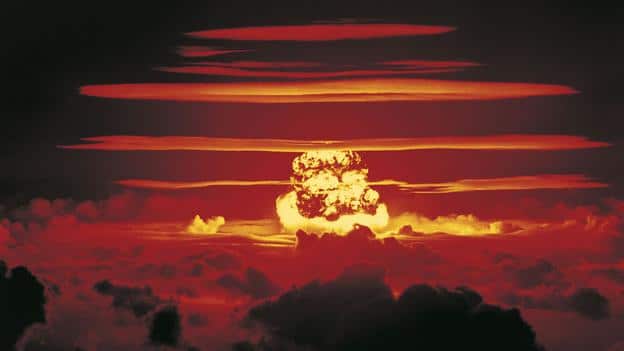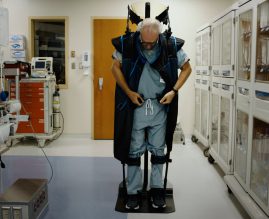Preparing for a Radiation Event – Simpler Than You Think
10.30.19 | Wednesday | Nofit Amir
With more than 13,000 nuclear bombs in active state (ready to be used), thousands more dismantled (often meaning they could be put back together in a matter of weeks), 50 bombs lost on the bottom of the oceans, and a host of countries (e.g., Egypt, Saudi Arabia, Turkey) setting up their own nuclear reactors to join the weapons race, we are living in a hyper-nuclear world.
In addition, a staggering quantity of nuclear waste and radioactive devices (in medicine, construction) are regular, everyday constructs of modern life.
The potential for accidents grows not only due to the sheer breadth of nuclear material but also with time, as Cold War infrastructure wears down (e.g., a leaking nuclear waste coffin in the Marshall Islands, or a leaking nuclear weapons waste site at Hanford, WA). Trying to stop leaks or salvage old nuclear relics from sea is in itself dangerous (e.g., the recent explosion taking the lives of five Russian sailors to salvage an old sunken nuclear device).
Moreover, nuclear material is becoming more accessible. Radioactive devices go missing at an alarming rate, and the construction of nuclear reactors for weapons-grade uranium worldwide raises proliferation concerns. The scenario of a terrorist-detonated dirty bomb or other small nuclear device is the nightmare of every government, and emergency plans for such an event are carefully articulated.
So how can one survive such a potentially explosive environment? With radioactive material transported all around us or stored near civilian centers, it is important, first of all, to understand the types of radiation emitted in the event of a catastrophe. For people residing a few miles away from the the perimeter of the blast, the main threat is fallout, which emits radiation in the form of rays (typically gamma rays) and particles (alpha and beta radiation): 1) gamma rays are highly penetrating and radiation protection against these rays has until recently been widely perceived as impossible except through a radiation bunker 2) alpha and beta particles can be protected against through external covering of the whole body with thick clothing, goggles and an oxygen mask.
StemRad’s groundbreaking technology
StemRad’s groundbreaking technology – used by NASA, nuclear power plants and militaries around the world – allows for wearable gamma radiation protection for the first time. This long-awaited technology significantly increases survival prospects by safeguarding the body’s vulnerable tissue from gamma radiation.
Deaths due to gamma radiation to date have occurred due to the destruction of vulnerable stem cell tissue in the body’s bone marrow. By protecting a significant portion of stem cells, StemRad’s 360 Gamma radiation shielding ensures that the body’s recovery system remains active (indeed, the treatment in hospitals for severe gamma radiation exposure is a stem cell transplant – by preserving one’s own stem cells such a procedure is preempted naturally). We can call call it a “suitless suit” because it’s not really a suit but if you’re looking for a radiation suit or a nuclear suit, then this is what you need.
To prepare for a radiation exposure event, keep the 360 Gamma – which is light and enables mobility – in an emergency kit. To prepare against fallout, store full body covering in the kit, including an oxygen mask. Iodine pills can protect against fallout that is inhaled (and may cause thyroid cancer, especially in children). Keep a transistor radio with batteries and water in the kit as well. Plan to shelter in a place that is as insulated from the environment as possible (a basement, or an inner windowless room in a large building). Taking such relatively easy precautions can take you a long way in surviving a radiation event.
Frequently Asked Questions
What type of disaster is radiation?
A radiation disaster is any unplanned event involving nuclear materials or radiation producing devices that may result in an increased exposure of the public to ionizing radiation.
How do you stop radiation?
Radiation can be stopped by adequate shielding measures, which typically involve placing mass between whatever is intended to be shielded from radiation and the radiation source.
How long after a nuclear bomb is it safe?
The US Department of Health and Human Services recommends staying indoors for at least 24 hours in the event of a nuclear explosion. However, residual radiation hazard can exist for anywhere between 1 and 5 years after the nuclear event.
Can a suit protect you from radiation?
A suit made of appropriate shielding material, such as lead, and thickness can protect people from the gamma radiation released by a nuclear weapon. However, a full body suit of lead would be too heavy to wear and move around in. The StemRad 360 Gamma concentrates shielding components around the most sensitive parts of the body – especially the midsection and hip area, where the body’s bone marrow tissue is located, providing effective shielding without requiring full-body coverage.

Writes content for StemRad’s website, social media, and newsletter. She is an advocate with over twenty years of experience of writing high-end content in academic and industrial settings.



